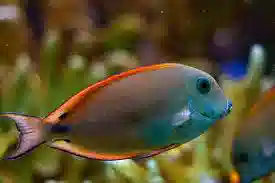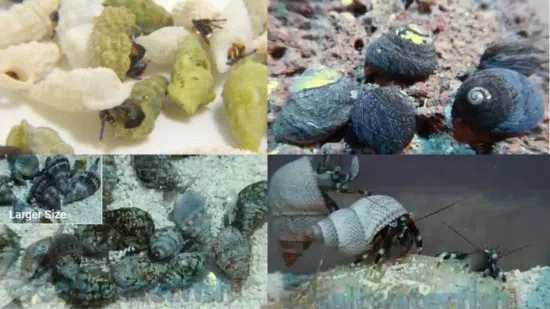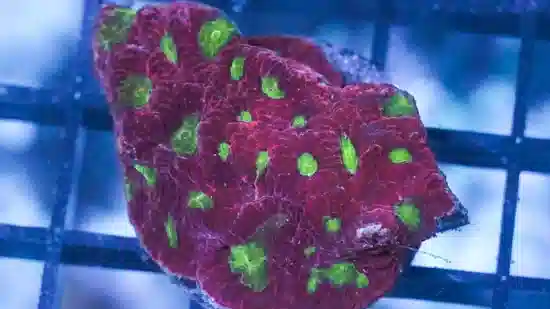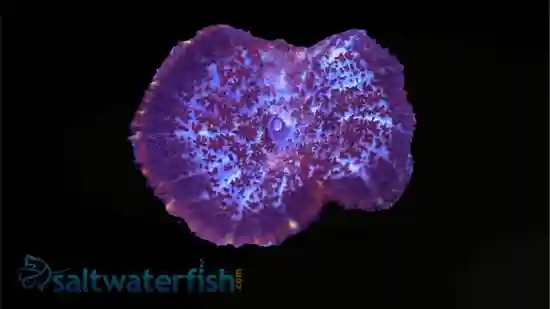Lavender Tang
Acanthurus nigrofuscus
(1 Reviews)

Lavender Tang
Acanthurus nigrofuscus
(1 Reviews)
{{ item.name }}
Size: {{ item.extra_field_3 }}
${{ getFormattedPrice(item.saleprice) }} ${{ getFormattedPrice(item.price) }}
To join the waiting list, click here
Free Shipping
With
$199.00
or more in Marine Life.
More details...
Lavender Tang Care Facts
| Care Level: | Easy |
|---|---|
| Temperament: | Peaceful |
| Diet: | Omnivore |
| Reef Safe: | Yes |
| Minimum Tank Size: | 120 gallons |
| Max Size: | 8 inches |
The Lavender Tang requires a tank with a moderate to heavy flow, creating currents to swim in. Being very active during the day, they require a large tank with plenty of open room to swim about while also providing plenty of live rocks and or Corals providing places to hide if frightened, as well as to sleep in at night. Lush natural algae growth in the tank is suggested in order for the Tang to be able to graze upon in between meals.
Lavender Tang (Acanthurus nigrofuscus) Care Guide
The Lavender Tang, scientifically known as Acanthurus nigrofuscus, is a fascinating addition to your saltwater marine aquarium. This care guide provides essential information to ensure the well-being of your Lavender Tang. Topics covered include habitat, reef compatibility, size, lifespan, diet in captivity, aquaculture availability, compatibility with other marine life, sexual dimorphism, juvenile to adult coloration changes, temperament, tank requirements, water conditions, common names, and reasons to choose the Lavender Tang from Saltwaterfish.com.
Habitat of the Lavender Tang:
The Lavender Tang is commonly found in the Indo-Pacific region, particularly around coral reefs and rocky coastlines. In its natural habitat, it feeds on various types of algae, and understanding this environment is essential for its proper care.
Reef Compatibility of the Lavender Tang:
The Lavender Tang is considered reef safe. As herbivores, they primarily feed on algae, making them a valuable addition to a reef aquarium. They help control and prevent excessive algae growth, contributing to the overall health of the reef ecosystem.
Size and Lifespan of the Lavender Tang:
Lavender Tangs typically grow to about 8-9 inches (20-23 cm) when fully mature. They can live for 7-10 years with proper care, providing long-term enjoyment in your saltwater aquarium.
The Lavender Tang's Diet In Captivity:
In captivity, providing a diet mimicking the Lavender Tang's natural feeding habits is crucial. They are herbivores, and their diet should primarily consist of high-quality marine flake or pellet food with added plant-based ingredients. Additionally, they supplement their diet with fresh or dried seaweed, spirulina flakes, and other algae-based foods.
Aquaculture and Availability of the Lavender Tang:
Currently, aquaculture of Lavender Tangs is not common, and most of these fish are obtained through wild capture. It is vital to source your fish from reputable suppliers, such as Saltwaterfish.com, to ensure they are acclimated to captivity.
Compatibility of Other Fish and Invertebrates with the Lavender Tang:
Lavender Tangs generally have a peaceful temperament. They can coexist with various fish and invertebrates in a community tank. However, to prevent territorial disputes, providing enough swimming space and hiding spots for each fish is important.
Sexual Dimorphism of the Lavender Tang:
Lavender Tangs do not exhibit sexual dimorphism, meaning males and females share similar physical characteristics and coloration.
Juvenile to Adult Coloration Changes of the Lavender Tang:
Juvenile Lavender Tangs typically display a vibrant purple or lavender coloration. As they mature into adults, their color may become more subdued, transitioning to a brownish-gray with hints of purple, particularly on the head and fins. Despite the change in color, they remain visually appealing.
Temperament of the Lavender Tang:
Lavender Tangs are known for their generally peaceful temperament. They are less likely to exhibit aggressive behavior towards tank mates, which makes them suitable for community tanks. However, providing enough space to reduce the chances of territorial conflicts is crucial.
Tank Requirements for the Lavender Tang:
To ensure the well-being of your Lavender Tang, maintain a tank size of at least 120 gallons (approximately 400 liters). This size allows for sufficient swimming space and the opportunity for the fish to express its natural behaviors. It is crucial to maintain stable water conditions, with a pH level between 8.1 and 8.4, a salinity level of 1.020-1.025, and a consistent temperature range of 74-82°F (23-28°C). Adequate water flow, a protein skimmer, and regular water changes are essential for maintaining water quality.
Common Names for the Lavender Tang:
The Lavender Tang is also known by other common names, including the Spot-Cheek Surgeonfish and the Brown Surgeonfish.
Compatible Tank Mates for the Lavender Tang:
When selecting tank mates for your Lavender Tang, consider the following five specific species that are less likely to provoke territorial disputes:
- Blue-Green Chromis (Chromis viridis)
- Firefish Goby (Nemateleotris magnifica)
- Neon Velvet Damsel (Pomacentrus alleni)
- Royal Gramma (Gramma loreto)
- Lawnmower Blenny (Salarias fasciatus)
Why Choose the Lavender Tang from Saltwaterfish.com:
The Lavender Tang is an intriguing and peaceful herbivore, making it an excellent choice for a reef tank. When acquiring this species, choosing a reputable source, such as Saltwaterfish.com, is essential. This ensures that your fish is well-acclimated to captivity, reducing stress and increasing its chances of thriving in your marine aquarium.
The Lavender Tang is a captivating and peaceful addition to your saltwater marine aquarium. By providing a well-maintained aquarium, a balanced diet, and suitable tank mates, you can enjoy the beauty of this species while contributing to the well-being of your aquatic ecosystem.
Beautiful Tang. Swims very fast but a little shy. If you walk by the aquarium it swims and hides in a cave.The Small fish does not have the color like the picture. mostly brown and a little orange on tail fin. Can't wait until it starts getting the lavender tones to it.
Reviewed by: Susan on Aug. 1, 2016















